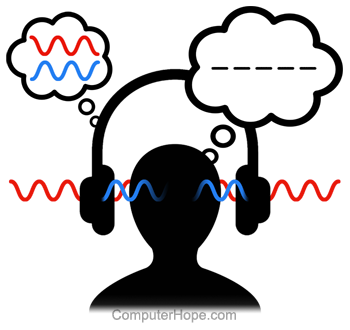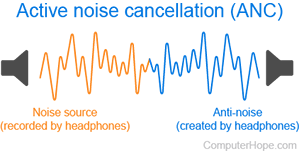Noise cancellation

Noise cancellation is a feature found in premium earbuds and over-ear headphones. When headphones are advertised as noise-canceling, they should be expected to block outside noise for the listener. Noise-canceling headphones allow the listener to focus on their video, music, audiobook, or other media in a noisy environment. This feature can be beneficial for airplanes, buses, or any other noisy place where it can be hard to focus.
While over-ear headphones have included noise cancellation for a long time, it's only recently implemented in smaller earbuds, including the latest Apple earbuds, the AirPods Pro. This change is due primarily to active noise cancellation development, which uses technology to limit background noise. For a breakdown of the difference between traditional (passive) noise cancellation, and the more recent active noise cancellation, see the section below.
Passive vs. active noise cancellation

ANC (active noise cancellation) uses a built-in microphone to monitor incoming sounds. By reversing the sound waves it records, it generates anti-noise to neutralize any sound that isn't being produced by the headphones. This method is most effective for canceling repetitive background noise, such as a loud fan or vacuum cleaner. Because the noise is being controlled actively, some high-tech headphones allow you to customize the degree of how much noise is canceled. This technology allows voices to bypass ANC while unwanted noise remains blocked.
Passive noise cancellation, or noise isolation, is a method that involves physically blocking outside sounds using the materials of the headphones. This technology is easier to achieve in over-ear headphone designs, where soundproof, dense materials like specialty foam cover the ear as much as possible.
